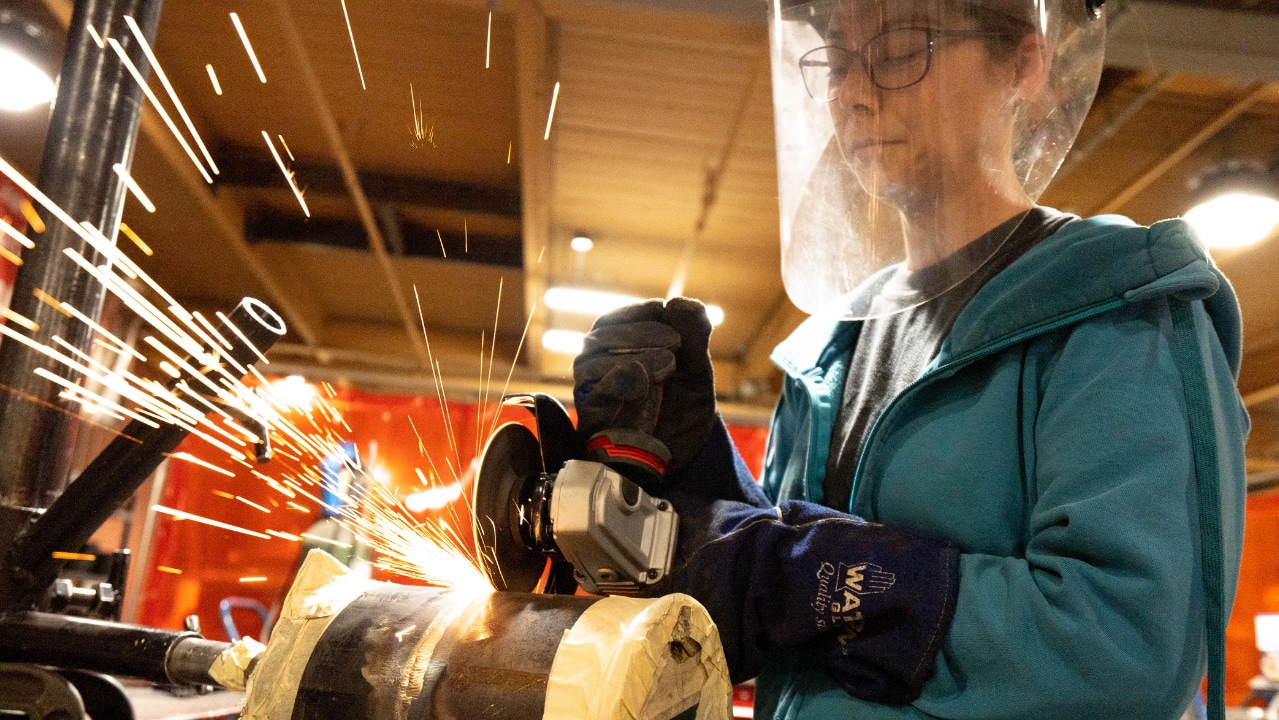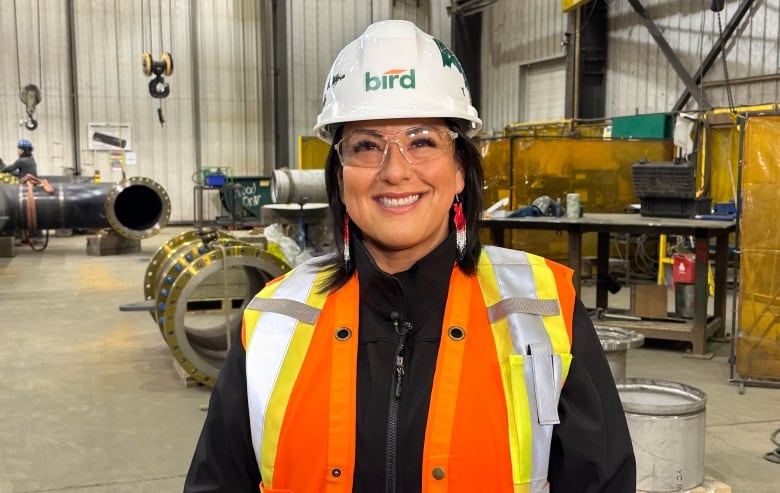Thank you for reading this post, don't forget to subscribe!

Skilled trades workers in demand but barriers exist
Some provinces are ramping up programs to get more workers into the skilled trades. But some are encountering barriers to landing a formal apprenticeship, which is needed to become fully qualified.
When David Tempelaar realized a college engineering program was a poor fit midway through first semester, he quickly pivoted to the trades — a familiar place from his high school tech-ed classes, and both his dad and grandfather were certified tradespeople.
However, “this was after the market crash in 2008, so I couldn’t find anything. Nobody was willing to take you on as an apprentice or even a helper,” he recalled from his home in Hickson, a small community in southwestern Ontario.
For the next few years, every potential employer that Tempelaar approached while working as a general labourer on construction sites repeated the same thing: “‘We’re looking for someone that has some experience. Call us back when you have some.'”
In 2019, he finally signed on as a millwright (industrial mechanic) apprentice years after transitioning to a factory job, growing fascinated by the mechanical maintenance crew’s work and volunteering to learn from them whenever possible.
But four years later, Tempelaar is still facing barriers. Busy periods have at times postponed the in-school training he needs to advance. On the flip side, those classes fill quickly — on a recent occasion, just 45 minutes after the sign-up email arrived in his inbox.

While the federal and provincial governments have intensified efforts to attract people to the skilled trades — especially youth, women and people from underrepresented communities — the path to becoming a certified tradesperson (also known as a journeyperson) can be filled with obstacles. Experts say mixed messaging from different sources, difficulty getting support on the apprenticeship track and some employers’ reluctance to invest in aspiring apprentices can stand in the way.
Apprenticeship is a path after high school that blends in-the-field training from one or more journeypersons and blocks of in-class learning with the goal of gaining a credential, certification or licence in a skilled trade from provincial or territorial authorities.
Some are designated Red Seal trades — plumber, roofer, welder, truck and transport mechanic, cook, heavy equipment operator and carpenter, for example — and being certified with that endorsement means you’ve met a national standard and can work in different jurisdictions.
“There’s a lot of organizations out there right now that unfortunately they talk about job placement…. Apprenticeship leading toward licensing is a career. A job is temporary,” said Mike Gordon, Canadian director of training for the United Association of Journeymen and Apprentices of the Plumbing and Pipefitting Industry (known as the United Association).

Gordon is wary of “mixed messaging” about skilled trades training, such as programs or organizations touting job placements not actually connected to apprenticeships. He advises aspiring tradespeople to do careful research into their area of interest.
“Look for [training program] outcomes. Go to your local union and find out — and don’t be discouraged if you don’t get in the first intake opportunity,” he said. “Ask questions of [non]-union people. Find a mentor — find somebody that’s in the trade. How did they get in? What were their lessons learned.”
Better tracking between training and certification
Unions don’t accept every single apprenticeship application, but they focus on the number of people who can be guided through a career “from the beginning right through to the end,” Gordon said, noting, for example, that if a union accepts 1,000 applicants when 90 jobs are available, the vast majority will be disappointed.
“We do have to fill these jobs, but we should do it responsibly,” he said.
Gordon said he wants to see better tracking and recognition of the training programs whose graduates actually become registered apprentices, as well as those employers signing up apprentices and supporting their timely progress toward certification.

“We don’t believe in a five-year apprenticeship that is completed in 13 years. We want to make sure that somebody at the end of the five years — or sooner — completes their apprenticeship.”
Megan Donnelly from the Toronto area said supportive training helped her move from a decade in the insurance industry after university to work in the trades that’s both intellectually and physically engaging.
After learning that the United Association was scouting out new recruits, she applied and took one of its pre-apprentice programs in welding. That and other training opportunities have helped the now third-term steamfitter apprentice find her footing.
“It was nerve-wracking for me because I am an older student and don’t have a lot of experience in this field, coming into something that I really wasn’t sure if I could do it or not. The union has made me a lot more comfortable,” Donnelly said. “Confident and comfortable that I can do this.”
Ongoing support needed
It’s key to connect with supportive organizations, agreed Rebecca Kragnes, Alberta-based director of Indigenous relations and community engagement at Bird Construction, which has offices across the country.
“Finding those organizations that help you navigate that first job is really a valuable way … to get into the skilled trades. They also offer a lot of support systems along the way — so it’s not just getting that job, it’s supporting that apprentice through the first year or so of their apprenticeship,” said Kragnes, who’s also board chair of the Canadian Apprenticeship Forum, a non-profit organization connecting the Canadian apprenticeship community.

She said there are multiple areas where industry can chip away at barriers for aspiring and new apprentices — including staggered shifts to provide flexibility for those with children in daycare, help with the cost of tools and work gear, and establishing camp accommodations for workers who must travel to remote or rural job sites.
Like Gordon, Kragnes also recommends that young tradespeople do their research. “Look for employers that are willing to sign you up into the apprenticeship program very quickly, who provide that one-on-one mentorship with a journeyperson,” she advised.
“You want to work somewhere that’s safe, that has a good environment to nurture your development — welcoming workplaces that have a lot of diversity, [where] they care about bringing everybody into the workforce.”
Greg Thompson, the owner-operator of Thompson & Sons Construction, a home-building and restoration company in British Columbia’s Okanagan Valley, said he believes in apprenticeship: It was his path and that of three of his sons.
However, he acknowledged it sometimes requires juggling from the employer side, especially with a small, five-employee operation like his.
“It’s actually a little bit more challenging in the early stages because I’m spending more time teaching as they’re building their skills. And then they’re going away for six weeks to school, so you’re kind of short on manpower,” Thompson said.

Finding work and having enough workers to complete it is “a constant balance that changes throughout the year, year by year,” he said, adding that over time, he’s encountered some employers who are reluctant to invest time and resources in early apprentices, believing they’ll inevitably quit to venture out on their own.
Thompson admitted it can also be tough to know if someone starting out will have the aptitude and dedication for working in the trades. “You might have people that start and then after a week, it’s not for them. It’s not the right fit.”
Still, he said he’s hired several apprentices this year and is participating in a federal program that supports small and medium-sized employers in hiring first-year apprentices. He sees concrete value in these programs, outlining, for instance, the fact that while doing their in-class blocks, apprentices are not paid since they’re not at work on job sites.
“The money that they’re giving is definitely very helpful,” Thompson said. “When [apprentices] go for about six weeks of school training, they have no income, so it’s very difficult for people starting out.”
Back in Ontario, millwright apprentice David Tempelaar, who is now working at an automotive parts supplier in London, Ont., said he’s happy to see incentive programs like this, but he thinks more initiatives focused on those under the age of 25 are needed to support young people pursuing skilled trades apprenticeships.
Despite the long road he’s taken, “I love doing what I do…. I never know what I’m going to be working on,” the 33-year-old said, lighting up as he ran through the variety of tasks he encounters daily — from replacing broken bolts and installing and programming sensors, to “playing with robots.”
Tempelaar said he senses that the overall situation is slowly improving, saying it was nice to see 19- and 20-year-olds in his first in-school training block — although he felt “a bit jealous they got in so early,” he quipped.
“I think times are changing. I don’t think it’s fast enough.”
